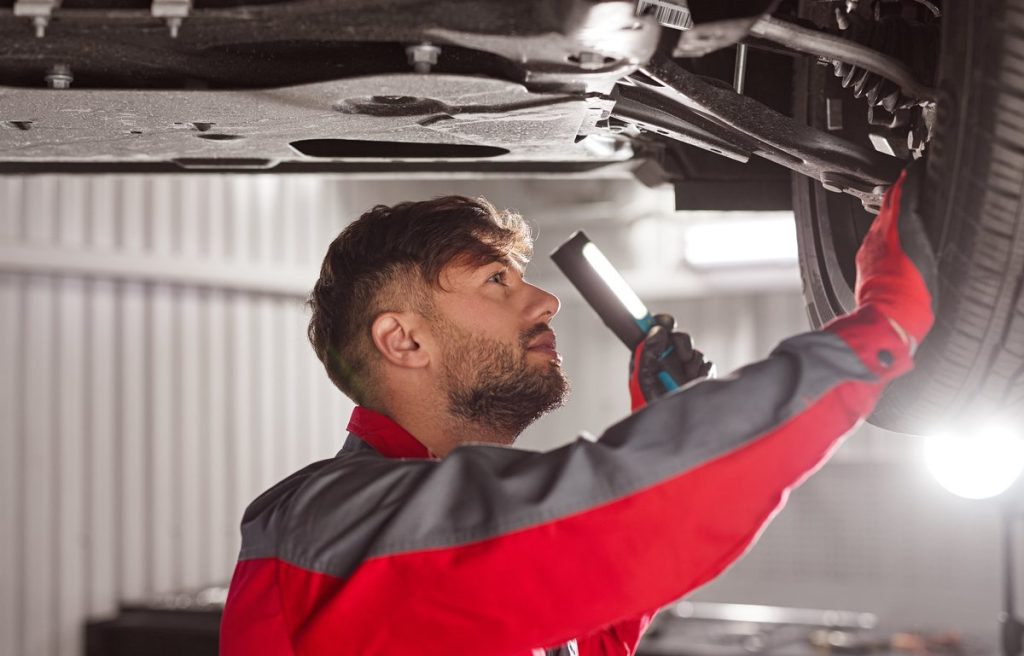If you’ve spent any time around a panel beater’s workshop, you’ll probably have heard the word “chassis”. You may have wondered what they’re talking about when they use this odd, French-sounding word.
The chassis is basically the framework of your vehicle. Some people also call it the undercarriage.
Even though it may sound French, it’s not. It’s usually pronounced “chassee” (rhymes with classy), but you may also hear it pronounced “shassee” (rhymes with shabby). The word comes from the Latin word for box (capsa), which makes sense when you visualise the framework or underbody of your car.
Aside from understanding what the word means, it’s crucial to know the importance of keeping your vehicle’s chassis free from damage.
Here we look at whether a damaged chassis can be repaired.
Types of Chassis Damage
There are a number of ways in which your car’s chassis could be damaged. The framework may be bent or cracked. This often occurs when the vehicle has been in a collision. Even a seemingly minor bump can damage the chassis.
Think of your car’s chassis like its skeleton. Sometimes a minor fracture can cause other niggly problems and eventually become a serious problem if left unattended.
A chassis may also be damaged as a result of rust. This is particularly true for locations where there is snow or sleet in the winter, along with road salt that can cause severe damage to a vehicle if not removed or cleaned.
Any of these types of damage can affect a vehicle’s safety and performance. Your car’s frame is what keeps the wheels in alignment, and it supports all of the other components of the car, including the engine, radiator, etc.
A bent or cracked chassis, or one weakened by rust, will affect the suspension of the vehicle. A car is quite heavy (and a ute or SUV even heavier), and the chassis must properly carry the weight for safety and efficiency.
If the framework of your car is damaged, the car may not brake or steer as it is meant to, putting you in danger when you drive.
Assessing Chassis Damage
Some signs of a damaged chassis are obvious. You can see crooked or rusted axles when you look under the car. Or a car door or the boot doesn’t close as smoothly as it should.
But not all signs of chassis damage are detected by visual inspection. An experienced panel beater will have other ways of detecting and assessing chassis damage.
They may notice that your tyres are wearing unevenly or that your car is pulling to the side when driven. There may be unusual noises or squeaking when you drive it. These are all possible signs that there is damage to the chassis.
Professional collision repair experts, like the team at Mt Roskill Collision Centre, will have the right diagnostic tools to assess the type and extent of chassis damage.
Repairing Chassis Damage
If you have been in a collision, no matter how minor, or you suspect that there is something wrong with your car’s framework, bring it to your panel beater as soon as possible.
Even a minor crack or bend can become more serious if left alone – especially if you’re then in a subsequent collision.
Depending on the extent of the damage, your we may be able to bend the chassis back to its proper shape using hydraulic tools. Some cracks can be repaired with welding. Some rust can be professionally removed and the framework strengthened.
Which method your panel beater uses depends on several factors, including the extent of the damage, the location of the damage, the age of the vehicle, etc.
You should never try to repair a damaged chassis yourself. This is work best left to experienced and trained professionals. Not only do you run the risk of nullifying your car insurance, but you may also be putting yourself and your passengers in grave danger. It’s definitely not worth the risk.
Replacing vs Repairing Chassis
A professional collision repair specialist will thoroughly assess the damage to your chassis and determine whether a repair or replacement is the best course of action.
Replacing a chassis can be very complex and costly, so wherever possible we will aim to repair a damaged chassis. We would recommend this if the damage is fairly minor, for example, if a bend can be straightened or a crack can be welded.
As mentioned, a new chassis can very expensive. If there is extensive damage, or there has been a lot of previous repair work to your car’s chassis, it may be time to look at replacing the vehicle altogether. Sometimes this is the safest and most cost-effective thing to do.
Preventing Chassis Damage
Because chassis damage is structural damage that can affect so many other components, it’s important to prevent chassis damage.
Avoid non-manufacturer modifications to your vehicle as much as possible. Lowering the suspension may look cool, but it’s not great for the overall performance or safety of your car. A chassis is not meant to be extremely close to the ground.
Make sure you’re driving properly. Racing over speed bumps, driving over curbs, and taking off-road shortcuts will all damage the framework of your car. It’s not worth it. All it takes is a bump in the wrong place to crack your chassis. Just like human bones, sometimes it’s just the unintentional minor accidents that can lead to more serious or long-term damage.
The experienced team at Mt Roskill Collision Centre can help you out if you have been in a collision or if you suspect that there may be damage to your car’s chassis. Likewise, if you’re purchasing a used vehicle and want the chassis assessed, get in touch.
Call us on 0800 227 762 or email [email protected] for professional and friendly car servicing advice.
